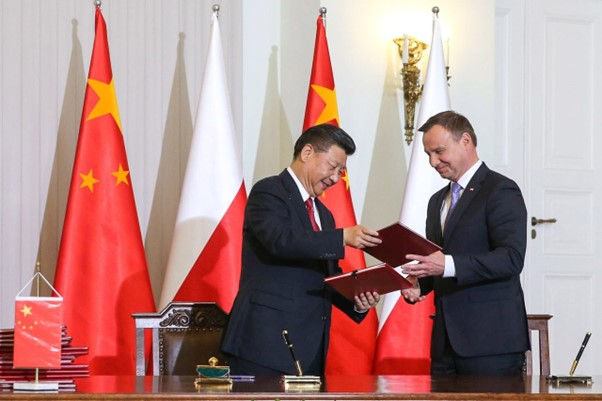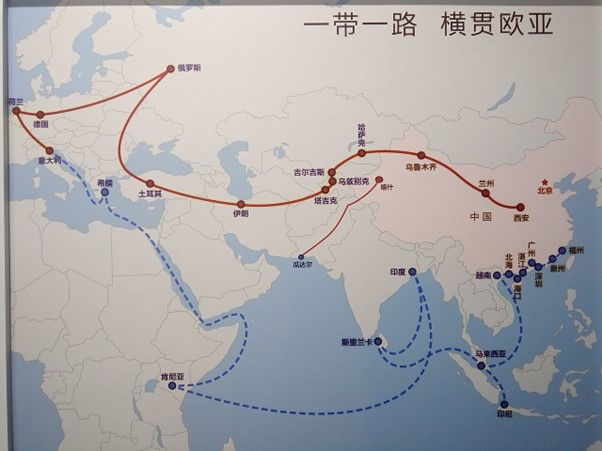The Belt and Road Initiative - China Goes Global
- benedictbamoody
- Sep 2, 2022
- 4 min read
China's prolific rise to global superpower has been buttressed by the strategy now known as the Belt and Road Initiative. In this article, Oliver Morten discusses the past, present and future of the initiative, as well as its implications on contemporary geopolitics in Asia.
Written by: Oliver Morten Edited by: Ben Moody

Xi Jinping, China’s leader, introduced plans for a global infrastructure and financing project in international visits to Kazakhstan in 2013, and 9 years on, the Belt and Road Initiative (BRI) has been one of the most influential global projects of the last hundred years. Spanning 149 countries and four continents, Xi’s ideas of a connected Eurasia centred around China are starting to grow in popularity abroad, and it shows no signs of stopping.
Unveiled at a foreign visit in Nur-Sultan, Kazakhstan in 2013, the BRI is an international large-scale infrastructure and finance campaign, mainly consisting of roads, railways, bridges, ports, education and improving trade between developing countries and China. It also includes the creation of the Asian Infrastructure Investment Bank (AIIB), which was injected with funds of over one trillion yuan ($165b) in 2015 to promote Eurasian economic development and regional integration. The infrastructure section of the BRI consists of six main areas:
The New Silk Road Economic Belt - Promoting regional investment in Central Asia, Russia and Eastern Europe, in countries like Russia, Kazakhstan, Turkey, Pakistan and Poland.
The Trans-Himalayan Multi-Dimensional Connectivity Network - Focusing on Nepal and Bhutan and integrating those land-locked countries into the larger East Asian market.
The Indochina Peninsula Connectivity Network - Focusing on connecting Thailand, Malaysia and Singapore with China and building new railways between China and Singapore.
The Russian Direct Investment Fund - Increasing connectivity of the Russian Far East and Mongolia with the rest of Asia, with ports built in Magadan and Okhotsk in the Northern Pacific.
The China-Pakistan Economic Corridor - a close partnership between China and Pakistan to improve Pakistan’s port and railway facilities.
The 21st Century Maritime Silk Road - the largest and most influential part of the BRI. It focuses on creating a large maritime trade route between China, South-East Asia, India, East Africa, the Middle-East and Europe.

(maritime route shown in blue, this map details many beneficiary cities and states of the BRI)
These economic belts also co-exist with the so-called ‘String of Pearls’ strategy, which directs Chinese economic and military to areas of significance, such as the Suez Canal, Straits of Hormuz, Straits of Molucca and the Horn of Africa. This allows China to control these significant trade routes, and influence countries that benefit from them such as Malaysia with the Strait of Molucca. According to EU diplomatic sources, the Quadrilateral Security Dialogue, made up of the USA, Japan, India and Australia was created as a direct regional counter to the ‘String of Pearls’ military direction. Other additions include the France-China Committee, a pro-CCP university programme in France, and a BRI study initiative in Xi’an Jiaotong University in Xi’an, China.
The BRI has received both significant praise and harsh criticism. International government supporters include Russia, Poland, Singapore, the Philippines, Greece, many Arab countries, Croatia, Pakistan, Kazakhstan and Malaysia. This large network of support spanning from south-east Asia to the Mediterranean gives the initiative a level of international legitimacy and allows the Chinese government to heavily invest in those countries that support the movement. Supporters have also noted the significant increase of GDP in recipient nations and a large increase in HDI and life expectancy, for example in Kazakhstan. Other major allies include Kenya and Tanzania in East Africa, where massive investments have been directed in an effort to spread China’s influence in Africa, which leads me to the criticisms of the BRI.
There are also many critics of the BRI, mainly in the West, especially the USA, which specifically established the ‘Free and Open Indo-Pacific Strategy’ to combat Chinese influence in Asia and Eastern Europe. Another major opponent is India, where government officials have noted the isolation of India from the Western economic sphere. Investment in Pakistan, Nepal and Thailand have prompted the Modi government to draw closer to both the USA and China in an effort to pander to both sides and receive the best economic benefits.
Many political analysts have also pointed out the possible economic colonisation of many countries, especially in Central Asia and Africa, whereby through investment, China can take hold of companies and hold influence in foreign governments through corruption and bribery. This is known as debt-trap diplomacy and is most common when a larger country extends debt to a smaller country in order to gain political leverage and influence. The smaller country faces massive debt which can be paid off in exchange for political favours or resource rights.
Overall, the Belt and Road Initiative is extremely controversial and is either adored or despised by political scientists and analysts for various reasons from dept-trap diplomacy to billions of dollars of investment in developing countries. Whatever you think of it, it is inevitable that it will play an influential part in international geopolitics for decades to come.





Comments